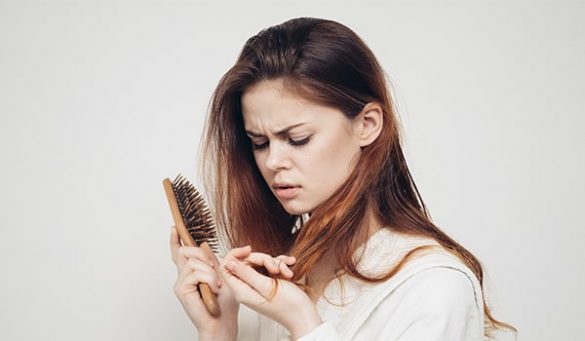Whether curly, straight, or wavy, your hair is a distinguishing part of your identity. So it’s no wonder people of all ages and genders worry about losing their hair. And if you’re getting older, you may start to wonder whether there are things you can do right now to prevent future hair loss. If so, read on to find out!

First, find out what kind of hair loss you have or are at risk for.
There are several types of hair loss, each caused by different things:
- Male and female pattern baldness, scientifically known as androgenic alopecia, is the most common hair loss condition. In fact, 50 million American men and 30 million American women have it, so you’re in good company. Unfortunately, there’s not much you can do about this type of hair loss, as it’s often a part of aging for both men and women.
- Alopecia areata is acute (short-term) and can leave you with a patchy scalp, a bald scalp, or no hair anywhere on your body. It can affect both men and women, and it happens in about 2% of the population.
- Infections can also cause hair loss. One such infection is tinea capitis, which is spread through contaminated combs, hats, and unsanitary hairstyling instruments. Tinea capitis is more common among children, but everyone who has had close contact with the patient should be examined.
- If you’ve wondered whether stress can cause hair loss, you’re right. Stress-induced hair loss is called telogen effluvium. Causes include chronic illness, pregnancy, infection, certain medications, and other factors. You may suspect telogen effluvium if you notice clumps of hair falling out while brushing or washing your hair in the shower. If so, ask yourself if there was a possible trigger two to five months ago.
- Telogen effluvium isn’t the only hair loss condition related to mental health. Trichotillomania is also caused by underlying psychiatric issues. People with trichotillomania have the impulse to pull at their own hair, causing it to fall out. Treating the underlying mental health problem is usually the best route for tackling trichotillomania.
- If you like styling your hair with the latest products, you may want to be aware of trichorrhexis nodosa. This type of hair damage is caused by heat application, which can happen from excessive use of hair curlers and straighteners. It can also be caused by excessive brushing, overly tight hairstyles, and chemical hair treatments like dyeing.
- Lastly, as you likely know, chemotherapy may cause hair loss. This condition is called anagen effluvium and happens at a rate of about 65%. Certain medications may also cause anagen effluvium. However, after stopping treatment, hair usually re-grows in one to three months.
Then, lower your risk for hair loss.
After learning about hair loss conditions, you may have a better idea about the condition(s) you’re most at risk of developing. Then, you can start removing risk factors. Here are a few tips:
- Don’t share hair care products like combs and brushes, and only visit hairdressers who use proper sanitation techniques.
- Be careful not to overdo hairstyling treatments. Let your hair rest once in awhile in its natural state.
- Prioritize your mental health! If you’ve noticed your hair has been falling out in clumps more than usual, this may be a sign that you need to slow down and take care of yourself. Don’t be afraid of asking for help from your doctor too.
Next, look for potential hair loss medical treatments.
If you are already experiencing hair loss, rest assured that there are medications you can use to stop, slow, or reverse it. Depending on the type of hair loss, your doctor may prescribe you medication:
- Finasteride (PROPECIA®) is an oral medication used to treat male pattern baldness. However, it has not been approved for women or children.
- Various topical medications can be rubbed into the scalp and can help with some hair loss conditions.
- If the condition is due to an underlying psychiatric condition, your doctor may prescribe an antidepressant.
You can access significantly more affordable versions of these prescription drugs online through an international or Canadian pharmacy service. This type of service will help you connect to licensed pharmacies outside the United States that offer pharmaceutical drugs at much lower prices.
Lastly, be wary of supplements.
Hair is an important physical feature for many of us. It’s no surprise that companies have capitalized on this by populating the market with supplements that allegedly help with hair loss. However, it’s important to note that the FDA does not regulate supplements, and not all supplements work or are safe for you.
Taking too much of a supplement can even be dangerous for your health. Nutrients that pose a danger when over-consumed include vitamin A, selenium, zinc, and vitamin E. Coincidentally, these nutrients are often touted as hair loss treatments.
Science does speculate a link between malnutrition and hair loss, however. For example, iron deficiency is the most common nutritional deficiency in the world, and premenopausal women, vegans, and vegetarians are at a higher risk of developing it. Since you should treat malnutrition anyway for the benefit of your overall health, consider asking your doctor for a blood test. This will determine exactly what nutrient you need more of, ensuring you don’t overdo it on something you don’t need.
